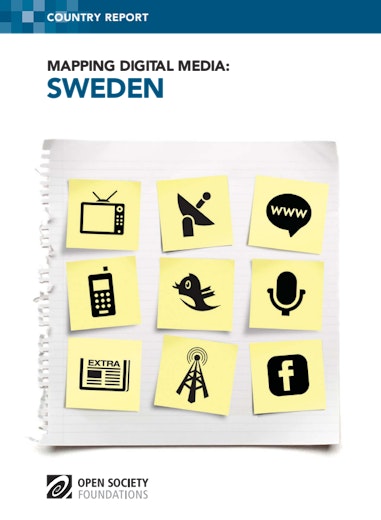The Mapping Digital Media project examines the global opportunities and risks created by the transition from traditional to digital media. Covering 60 countries, the project examines how these changes affect the core democratic service that any media system should provide: news about political, economic, and social affairs.
Sweden's media system is based on the dominance of public service broadcasters and high newspaper penetration. However, while press circulation figures are still among the highest in the world, the overall consumption of broadcast media has decreased slightly over the last five years. At the same time, levels of internet penetration and computer use are among the highest in the world.
Digitization seems to have affected general media preferences much more than news media preferences. The battles over entertainment (movies, sport and drama) seem largely to be lost to commercial media, but public service radio and TV have maintained their position as trustworthy and reliable news providers. Television news still reaches 83 percent of the population every day, and SVT and Sveriges Radio (Radio of Sweden) are still the most trusted outlets, along with TV4, the largest private channel.
In terms of media ownership: concentration at the national level is the dominant trend in the newspaper and television markets. (Sweden has no law against media ownership concentration.) This presents a threat to independent news media. Looking ahead, the core challenge facing public service broadcasting is the transition to public service media. Politicians have generally been supportive of the expansion of public service onto new platforms, and there is a social consensus that public service media remain important.
Download
-
Mapping Digital Media: Sweden (377.01 Kb pdf file)
Download the complete 74-page report.
Read more
Voices
What Does Independent Journalism Look Like in the Digital Age?

Journalists and media organizations can find themselves repressed because of inadequate or deliberately repressive policy. Mapping Digital Media examines the situation in 56 countries.
Voices
Does Digital Media Mean Better Media?
From Montenegro to Nicaragua to China to Egypt, has digital media improved access to good-quality journalism?
Voices
The Impact of Digital Media on Sweden
Sweden offers an intriguing test case for studying the impact of media digitization on journalism and democracy.
